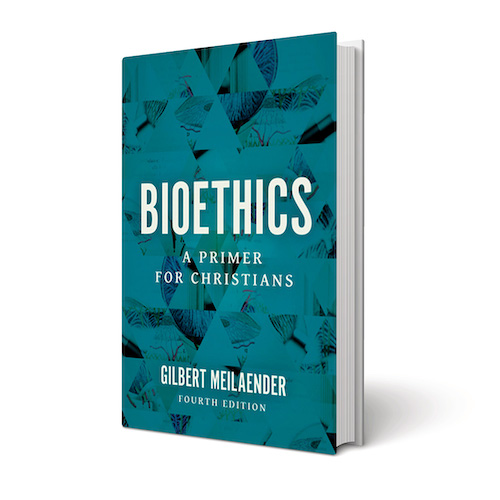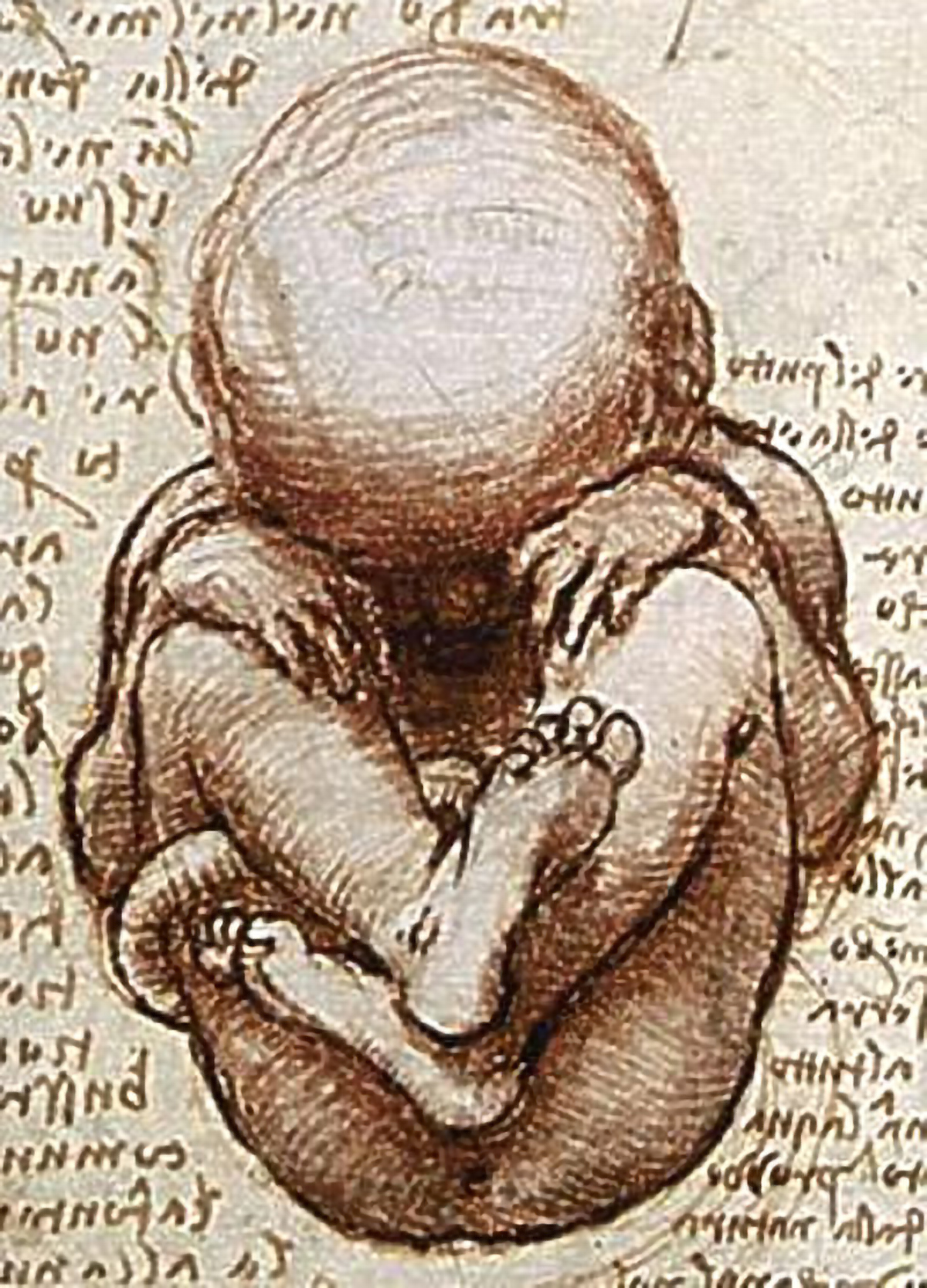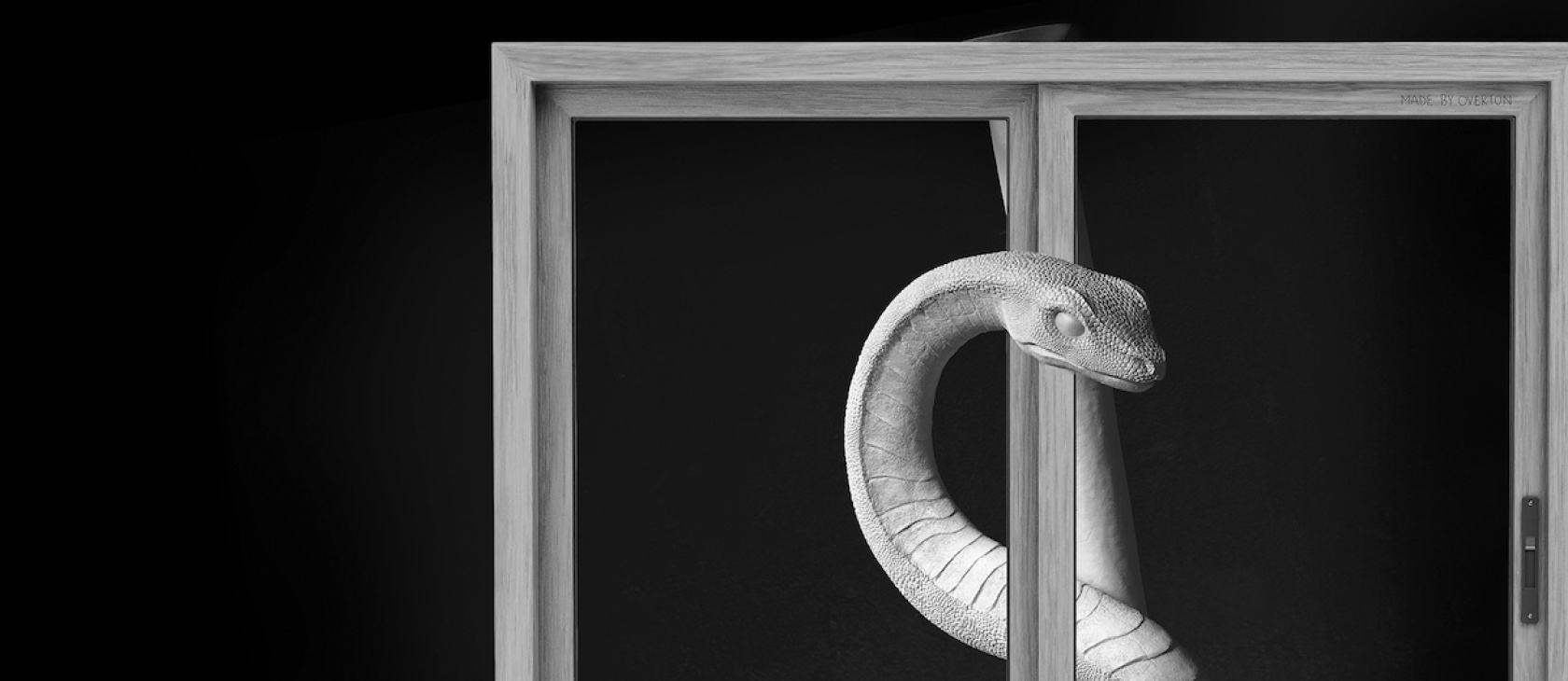Rebecca Brown begins a 2019 essay “Philosophy Can Make the Previously Unthinkable Thinkable” by explaining the Overton window of political possibilities. Joseph Overton proposed the idea that think tanks should be designed to question the received opinion in both academia and the public regarding certain public policy issues. Think tanks could shift the window of possibilities, making the unthinkable thinkable. Brown’s point is that philosophers should take a page out of Overton’s strategy. Philosophers are particularly situated to diagnose “unjustified assertions” and point out “circularities.”
Two books address the disturbing fact that medicine is most often unfriendly, even hostile, to those who want to root bioethics in their religious faith. Whether a doctor or patient, a nurse or caregiver, the guidance given by these authors is greatly needed.

By Alisha N. Mack and Charles C. Camosy
(Eerdmans, 2022)

By Gilbert Meilaender
(Eerdmans, 2020)
That there are received opinions in contemporary bioethics on issues such as abortion, euthanasia, and human embryo destructive research is somewhat clear; arguments that include nonpermissive judgments on these issues are underrepresented. Brown observes correctly that unorthodox “positions on contentious [practical/ethical] topics attract far more scrutiny than abstract philosophical contributions to niche subjects. This means that, in effect, the former are required to be more rigorous than the latter, and to foresee and head off more potential misappropriations, misinterpretations and misunderstandings.”
Commenting on how pro-life bioethicists are treated by the profession, David Oderberg, in a 2008 essay for Human Life Review, wrote the following:
Such thinkers have to be marginalized and demonized, and so they have been. This significant minority has been corralled into a corner, tarred with the brush of religious fundamentalism, and brought out into the light of day only for the occasional beating by the majority. They can have their little conferences and workshops, make their feeble protests, but then they are ritualistically stripped bare, flayed for the amusement of the multitude, and sent back into their corner.
It is in this context that the present books are written. As such, they represent an expansion of the Overton window; a counter flotilla, if you will, drifting on the seas of contemporary bioethics.
Claiming neutrality in the healthcare setting is impossible. Whether one affirms or denies the Christian vision of the good, one must act for an end that the agent apprehends as good.
In Bioethics for Nurses: A Christian Moral Vision, the authors observe that medicine and bioethics are “most often organized in a way that is unfriendly—and sometimes even hostile—to those who want to practice medicine and/or bioethics on the basis of their explicit religious faith.” Because of this hostility, there are very few if any bioethics books that address specific concerns “for the millions of Christian nurses.” This book is meant to address this gap.
Bioethics for Nurses is ordered in three different parts. Briefly, the first part aims to situate nursing practice within the theological vision of Christianity. The point is to show not just that nursing practice was originally understood explicitly as representing Christ to the patient, but that the very actions of nursing practice must be understood as Christ-like. The atheist clinician is still doing Christ’s work. Mack and Camosy cite Matthew 11:2–5 to make the point. When John the Baptist’s followers ask Jesus for proof that he is the Messiah, Christ cites healthcare delivery as the principal evidence: The lame walk, the deaf hear, and the lepers are cleansed. Many religious orders in the first few centuries of Christianity considered healthcare delivery as a principle part of their charism. Mack and Camosy reference the Rule of St. Benedict, written in the fifth century, in which it states that “care of the sick is to be placed above and before every other duty.”

One can still understand a practice in ways that deviate from the intrinsic telos of the actions characteristic of that practice. For example, many understand OB/GYN practice to include abortion. But if OB/GYN practice is not to be understood as collapsing solely into internal medicine for women, the good of pre-born children must be a goal of that practice. When an OB cares for a pregnant woman, she has two patients, not one. So, too, for nursing practice and Christ’s model of selfless giving to the benefit of the whole person. The actions of a nurse recapitulate Christ’s love for the sick, that is his or her telos. A secular understanding of nursing practice fails to plumb the depths of nursing actions to their Christ-like roots. One is reminded here of John the Evangelist’s observations to the effect that “no one has ever seen God, but if we love one another, God lives in us and his love is perfected in us” (1 John 4:12). When a nurse loves her patients, the patient doesn’t see God but is touched by God nonetheless.
Understanding the axiological roots of nursing practice goes some way toward rebutting a purely secular understanding of it. A secular understanding of nursing practice artificially amputates its axiological foundation, which is to say the necessary value judgments inherent in the practice. On Mack and Camosy’s view, a secular understanding is self-defeating. “There is simply no way for a healthcare provider to act for a patient’s good … without having a vision of the good in the first place.” Claiming neutrality in the healthcare setting is impossible. Whether one affirms or denies the Christian vision of the good, one must act for an end that the agent apprehends as good. But the secular understanding is a pollarded vision of nursing practice because it fails to recognize that nursing practice is one conduit through which God addresses the problem of suffering. Mack and Camosy note that “our acts [as Christian nurses] become bigger than caring and comforting and become a way for the hurting world to experience God through us.”
The 7 Heavenly Virtues Reimagined
The second part of Bioethics for Nurses aims to reveal the seven ethical principles characteristic of Christian nursing practice: (1) human beings have equal dignity in virtue of all bearing the image and likeness of God; (2) human beings are living bodies, and therefore come into existence at conception; (3) human beings must accept death but never produce it or intentionally bring it about; (4) all human beings are equal before God; (5) the Christian clinician should privilege serving the marginalized and vulnerable in their practices; (6) a necessary feature of human flourishing is friendship; and (7) we must love God with all our heart, soul, mind, and strength.
Though the first and fourth principles are conceptually redundant, practically speaking the upshot is captured in principle 5: human-created distinctions such as patients in a minimally conscious state having less worth than those who are fully conscious are inimical to the Christian vision of clinical practice. The human person, however disabled, is the central subject of one’s loving actions. Such persons are at all points in their clinical stay worthy of our caring and attempts to cure.
Actual clinical cases that illustrate or are examples of the principle in question also highlight this section of the book. Some of the cases are illustrations of how the principle is violated. It is through reflection on what went wrong, on how the clinicians missed the mark, that one is reoriented to the true ethical goal for the case in question. The feel I got in reading this section is unlike reading a typical bioethics book. For the latter, I feel like I am considering an issue in the abstract—is the type of action—such as abortion—permissible? For the present text, I felt bedside, as if in the clinic myself.
The third part of the text explores some moral issues on the horizon of nursing practice. Included here are issues pertaining to conscience rights, the inclusion of nurses in the construction of care planning and hospital policy, and providing care when doing so may be directly harmful, as it was during the initial phases of COVID-19 (with limited PPE).

A Distinctly Christian Vision
There is much to admire in this book. First, it is clearly one of a kind. It addresses several key points nicely. For example, in arguing for a space for a distinctively Christian nursing vision, the authors accurately note that a secular vision is not only incapable of providing one that has any philosophical motivation but has also acted hypocritically in expunging a Christian vision of nursing practice from bioethical discussion. The secular vision, too, has to make axiological assumptions. It cannot privilege those assumptions and in the same breath claim it is being inclusive; it cannot argue against conscience rights and in the same breath fail to explain why the autonomy of the patient is preeminent (and only when she requests abortion but not if she is suffering from body integrity identity disorder and requests amputation of healthy limbs), whereas the autonomy of the clinician means nothing.
The authors pitch the book to nurses and so steer away from rigorous philosophical analysis. A second admirable quality is that the book is very economical in this regard. It focuses on making the key points as clearly as possible but does not force the reader to get the point by extended argumentation. For example, they explain the “intention-foresee” distinction with a helpful thought experiment. Imagine extubating a patient for what is called a terminal wean—further respiratory support is futile and the patient is expected to die. Contrary to expectations, the patient breathes on her own. If you do not snuff her out, your intentions were not to have the patient die. You aimed to relieve the patient of a burdensome or nonbeneficial treatment. If you really intended that she die, you would find another means to accomplish that end. Most healthcare professionals do not suffocate their patients if they survive a wean off a ventilator, indicating what their original intention was. Again, this was written for nurses, not philosophers, and should be judged accordingly.
One way the book could be improved in subsequent editions would be to expand a bit more on the issue of including nurses into care planning and policymaking. One question I had throughout this discussion is “How?” In my experience in the hospital setting, many nurses knew more important information than the attending physician—for example, they knew the patient and the family better. However, I could barely see a way for this knowledge to be distributed given the culture and expectations of modern medicine.
In the end, Bioethics for Nurses introduces future Christian nurses to a beautiful moral vision for their vocation. For non-Christians and secular clinicians, the book is important for understanding a more robust moral vision for healthcare delivery.
Our Limits, Our Finitude
Meilaender’s Bioethics: A Primer for Christians (4th ed.) continues the same trend of limning the Christian vision of healthcare practice, but with a higher-resolution focus on specific issues—for example, euthanasia, IVF with intracytoplasmic sperm injection, abortion, CRISPR/Cas9 gene-editing research, etc.
Whereas Mack and Camosy place the emphasis on healthcare’s Christ-like roots specifically, the motif of caring for the whole person, Meilaender focuses attention on the fact that we are created beings who must obey the limits and finitude that accompany that ontological status. Whereas Mack and Camosy focus on Christ’s moral teachings, Meilaender emphasizes the human person qua created being. The result is a lesson in humility, without the humiliation. When we ask ourselves first “what attitudes ought a created being have toward various developments in medical science?” notions such as acceptance, humility, and coming to terms with one’s mortality come immediately to mind. Which is to say that domination, control, and mastery do not come to mind.
Meilaender focuses attention on the fact that we are created beings who must obey the limits and finitude that accompany that ontological status.
Here are a few examples highlighting this theme of humility that Meilaender weaves throughout the bioethical issues he discusses. On the topic of abortion, Meilaender thinks that Christianity’s principal objection is not so much what is wrong about pro-abortion arguments but what is beautiful about the pro-life vision. Emphasis should be placed on the acceptance of life. “Life of the child in the womb is God’s creation, and the child is part of the world Christ came to redeem.… Our continuing task, therefore, is to struggle to bring our judgments and feelings into accord with God’s action—to let our estimate of the child be shaped and formed by God’s.” When discussing genetic modifications, either in the form of gene therapy on germline cells or genetic enhancements, Meilaender states: “We need the virtue of humility before the mystery of the human person and the succession of generations. We need the realization that the children who come after us are not simply a product for us to mold.” On the issue of suicide he says that “Christians have held that suicide is morally wrong because they had seen in it a contradiction of our nature as creatures, an unwillingness to receive life moment by moment from the hand of God without ever regarding it as simply ‘our’ possession.”
As for advanced directives, Meilaender argues against their use because they eliminate discussion about the patient’s narrative and life story. “That is part of their [healthcare living wills] problem, for they free us from the need to deal with the ambivalence we feel in caring for a loved one who has now become a burdensome stranger.” In the context of organ donation, Meilaender discusses the importance of the dead-donor rule: “Any solid organ donation … that would cause death or great harm to a living donor is not a proper work of creaturely love.” Research on human subjects to tests drugs, devices, or surgical procedures must follow the path of humility as well. The ethical issue, of course, is that it is research. One is using human subjects to acquire knowledge about the safety and efficacy of a drug, device, or procedure. When the fight against death and disease employs war analogies, human subjects become means to the end of conquering illness. Into this utilitarian mindset, Meilaender speaks: “Placing our hope in the forward march of medical research, we deceive ourselves into imagining that it could be redemptive, that it might overcome the sting of death. In short, we fashion the golden calf of research medicine.” These quotations illustrate how the motif of humility is woven throughout. One gets a sense of how Meilaender is thinking about these issues, and it is a very refreshing perspective to say the least.
A few interesting points emerge from Meilaender’s discussion of prenatal screening. He notes that it can be put to good use, “but we deceive ourselves if we suppose that as a routine feature of medical practice, it can simply assist the couple to prepare themselves for the child’s birth. It does exactly the opposite. It sets our foot on a path that is difficult to exit. … The technology carries its own momentum. … It prepares us not for the kind of commitment that parenthood requires, an unconditional commitment.” Similar to Mack and Camosy’s point above about the intrinsic teloi of nursing practice, Meilaender sees intrinsic teloi to certain procedures and medical technologies. One could understand prenatal screening as simply satisfying a desire to seek knowledge about the child, but it is only with effort that one can hold on to the unconditional acceptance of the child. The practice itself works to extinguish or quell such attitudes.

Although Meilaender pitches the book to Christians, he explicitly invites others to “listen in.” I think this undersells the book’s importance. In his discussion of reproductive technologies (IVF in particular), Meilaender writes:
If, by contrast, we come to think of the child as a product of our reason and will, we have lost the deepest ground of human equality—and, perhaps as important, missed the meaning of the human act of love. A child who is thus begotten, not made, embodies the union of his father and mother.… Their love giving has been life giving: it is truly procreation.”
If children are treated as objects at the origins of their inception, how could that not affect our moral intuitions downstream? Anyone concerned about preserving the ideological grounds for human equality ought to be deeply concerned and familiar with the Christian moral vision in bioethics. Whether unconscious, minimally conscious, or fully conscious, born or pre-born, frail and elderly or strong and young, all are indeed persons. We might be disabled, but we are disabled persons; we might have a debilitating disease, but we are still persons with the disease. We are all worthy of care, even if we cannot be cured. Meilaender could have said, “Others should listen in.”
If children are treated as objects at the origins of their inception, how could that not affect our moral intuitions downstream?
This is the fourth edition of Meilaender’s Bioethics and so some comment about the topics discussed and changes from previous editions is warranted. Meilaender notes that this addition includes a discussion of CRISPR/Cas9, a gene-editing technique, and he has expanded the discussion of conscience rights. As with previous editions, the core issues of concern particularly to Christians are addressed in this relatively small volume—namely, abortion and euthanasia. What moral criteria should govern the withdrawal of life support? When is it permissible to extract vital organs from a donor? When is it permissible to perform more than minimal risk research on human subjects? What moral criteria should govern the treating of infertility? This is not an exhaustive list, but it constitutes the core concerns of Christians. Meilaender navigates these issues with a very readable text and a sense of unity. The centrality of the human person and the humility proper to our status as creatures reverberates throughout the text.
Though this is the fourth edition, I would still have liked to have seen some updating in the following regard. As with previous editions, Meilaender thinks that abortion is permissible in certain circumstances, namely sexual assault. I don’t think this is the Christian view of things, but if it were, it would not be for the reasons Meilaender states. He correctly argues that pre-born human beings are full persons and are formally innocent. In the context of sexual assault, according to Meilaender, the pre-born human being may continue “to represent in vivid form the attack the woman suffered.” The Christian ethical tradition has typically resisted making moral judgments based on how people are “represented” or seen. Human history is littered with acts of genocide and systematic oppression. None of these actions could have been undertaken unless the perpetrators represented their victims as something other than the human persons they are. However pre-born persons may be seen or represented as, they are in truth persons. How one person may be “represented” to another is not sufficient justification for violent actions against them. But this is a single blemish on an otherwise insightful, readable, and very wise text.
Seeing the Divine in the Human
I close this review essay with a few reflections on what exactly is specifically Christian about Christian bioethics. That requires thinking about the Incarnation. From Scripture and tradition, we can derive that Christ’s assumption of humanity was not just metaphysically possible but also fitting. Human nature is a fitting receptacle for divinity. Jesus even quotes Psalm 82:6, reiterating the notion that we are “gods,” and the long-standing teaching in both the Eastern and Western churches is that the end point for the Christian is to become like God, to become deified, to move from the image of God to His likeness. Deification is not just possible; it’s our calling.
This implies something profound about humanity. If humanity is called to participate in divinity, it must be ontologically possible for it to do so—with God’s transforming grace of course. But if it is possible, humanity bears, in some sense, an imprint of divinity.

The Incarnation also implies something profound about God’s intentions. God wanted to assume humanity. If we ask why the Incarnation occurred, it is that God desired to descend so that we may ascend. God desires union with me. Homicide, battery, and other injustices against the human person are also forms of deicide and sacrilege. We are not worthwhile simply because we can function well or that our so-called quality of life is satisfactory. We are worthwhile because of what we are, not in virtue of what we can do. That humanity bears an imprint of divinity and that God desired union with us entails that we have our worth at all points in which we exist. We have it prior to reaching certain developmental milestones of human nature. We have our worth, our inherent irreplaceable worth, whether others recognize it or even whether a specific person recognizes it.
Naturalism has a very hard time accounting for these objective and universal moral facts. William Fitzpatrick, in “Morality and Evolutionary Biology,” asserts the following: “On the face of it, the mere fact that natural selection would not have ‘designed’ our moral faculties to track moral truths accurately (as it plausibly designed our perceptual faculties to track [perceptual] facts…) is not obviously problematic” (emphasis mine). It is quite plausible to suppose that unguided evolutionary mechanisms would not select for cognitive faculties that are able to apprehend the deontic (i.e., obligatory) quality of moral judgments, assuming that we would form faculties for making moral judgments at all. Michael Rea in his World Without Design comments on the relationship between naturalism and believing necessary judgments as follows.
Believing mathematical falsehoods, logical falsehoods, and conceptual falsehoods might result in failure to survive and reproduce. But how could there be any evolutionary advantage associated with having true beliefs about the modal status of these propositions? So long as one believes that 2+2 = 4 will always be true, it does not seem to matter whether one also believes that it is necessarily true.
Similar thoughts apply to the relationship between naturalism and obligatory moral judgments. We make moral judgments often enough, and a subset of those judgments are judgments to the effect that certain actions ought never to be done. Likewise, there are certain actions of the sort that must be done in certain circumstances. The “ought” or “must” of our moral judgments I refer to as their deontic quality. The key point is that there is no reason given unguided evolutionary mechanisms to think that we would develop cognitive faculties that cue us to apprehend the deontic quality of moral judgments. Conversely, a good and loving God who desired that we treat all human beings equally in the face of biases, conflicts of interests, etc., would dispose us to see the deontic quality of certain actions. If one is an atheist, she canbelieve that the human person has inherent dignity that ought never be blemished, but she is not required to think this. (Many atheists coherently deny that persons have inherent dignity.) The Christian, however, must believe that the inherent dignity she sees in persons must be respected, and she has every reason to believe that what she sees is what God intends her to see.
Both Bioethics for Nurses: A Christian Moral Vision and Bioethics: A Primer for Christians deserve inclusion in an undergraduate class in Christian ethics. I would strongly recommend considering Mack and Camosy’s work for a nursing ethics course, and reserve Meilaender’s work for a bioethics course. I make this distinction because some of the issues with which Meilaender deals are not directly applicable to nursing practice. And, again, my strong recommendation does not change whether one is secular or religious.








